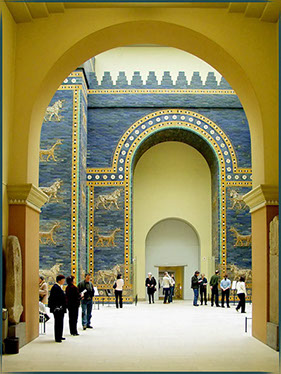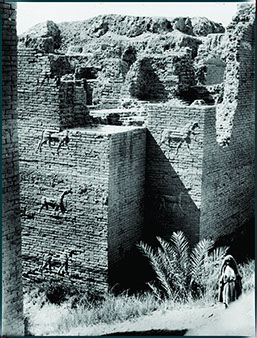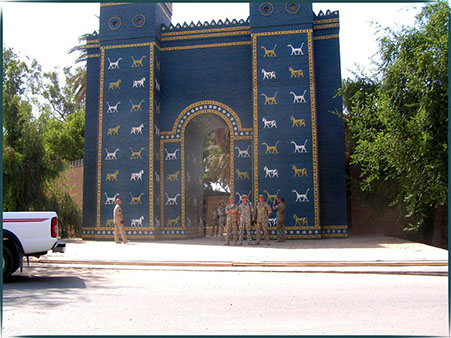
ISHTAR GATE
reconstruction
The remains of the gate were discovered in Babylon during the German archaeological campaigns of 1899 to 1914.
Discovered by archaeologist Robert Koldewey famous worldwide for being the discoverer of Babylon. Koldway designed a system to be able to excavate the fragile adobe blocks one by one without being damaged, which took him almost two decades. Most of them were later moved to Germany where in 1930 a reconstruction of the outer door was made as well as part of the processional route in the Pergamon Museum in Berlin where they are exhibited today.
Other parts of the Ishtar Gate and some lions of the processional way can be found in museums around the world. The Istanbul archaeological museum has lions, dragons and bulls in the same way other museums such as the Röhsska Museet in Goteborg, the Institute of Art in Detroit, the Louvre in Paris and the Metropolitan Museum in New York.
Another reconstruction was made in the position of the original door under the government of Saddam Hussein in Iraq, this reconstruction was intended to be the entrance of the new Iraqi archaeological museum, but this never came to fruition. This replica is currently under the care and maintenance of the Army of the United States of America.















